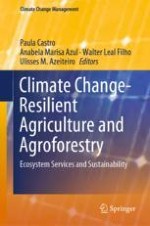2019 | OriginalPaper | Buchkapitel
Environmental Assets and Carbon Markets: Could It Be Amazônia’s New Belle Époque?
verfasst von : Thiago Lima Klautau de Araújo, Amadeu M. V. M. Soares, Ulisses M. Azeiteiro
Erschienen in: Climate Change-Resilient Agriculture and Agroforestry
Aktivieren Sie unsere intelligente Suche, um passende Fachinhalte oder Patente zu finden.
Wählen Sie Textabschnitte aus um mit Künstlicher Intelligenz passenden Patente zu finden. powered by
Markieren Sie Textabschnitte, um KI-gestützt weitere passende Inhalte zu finden. powered by
